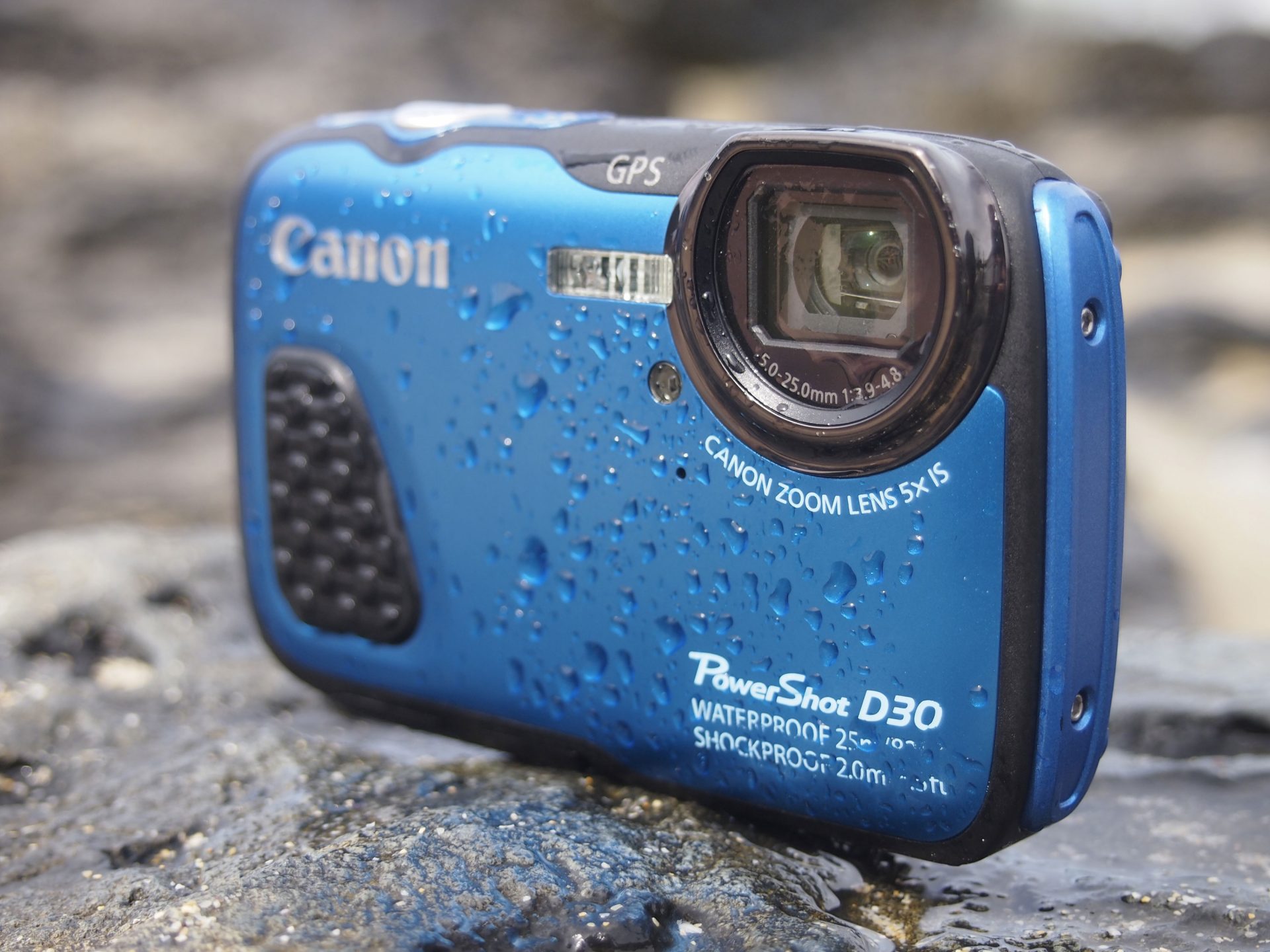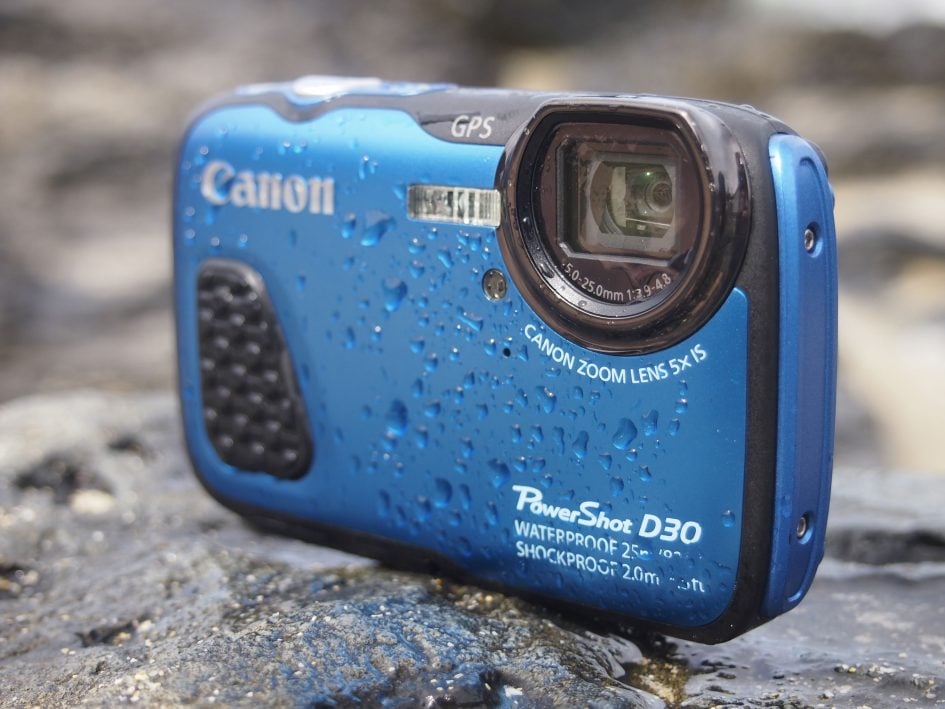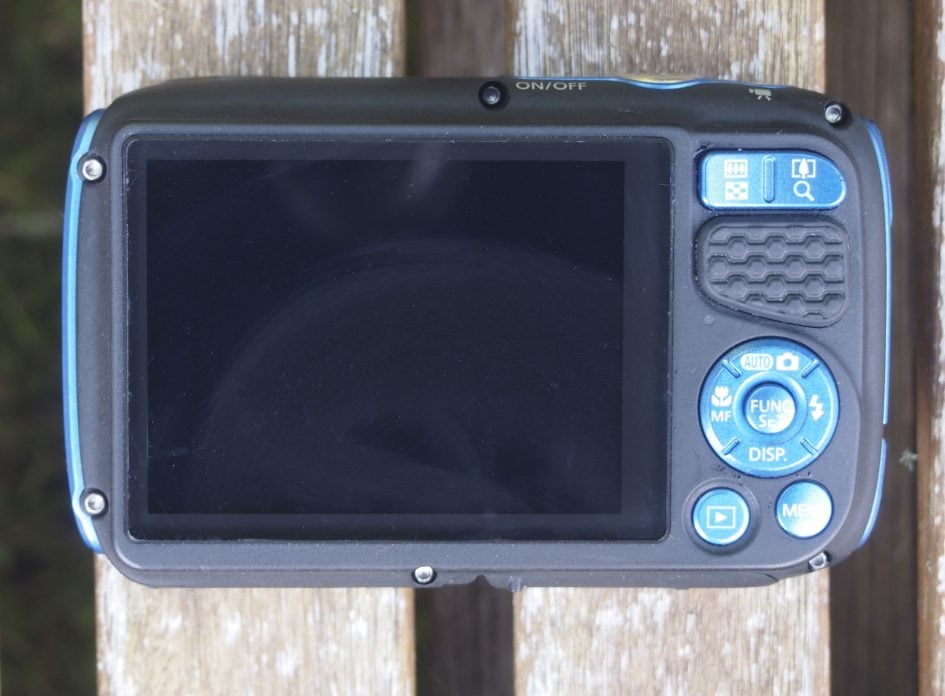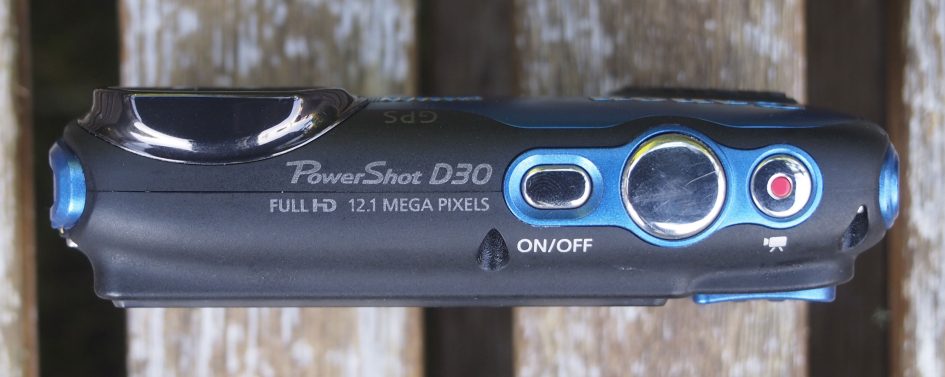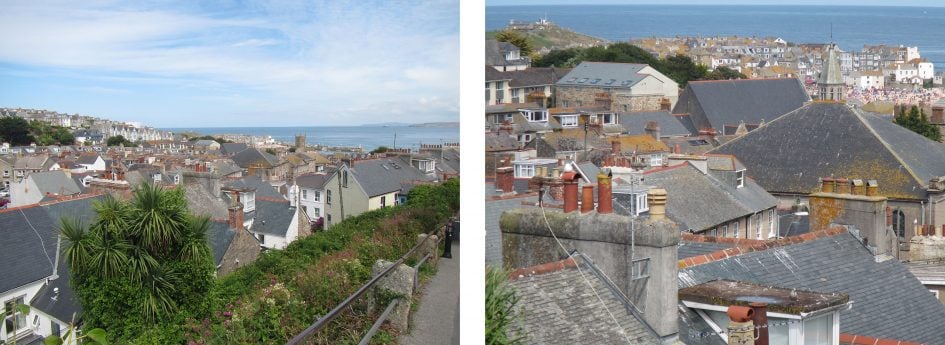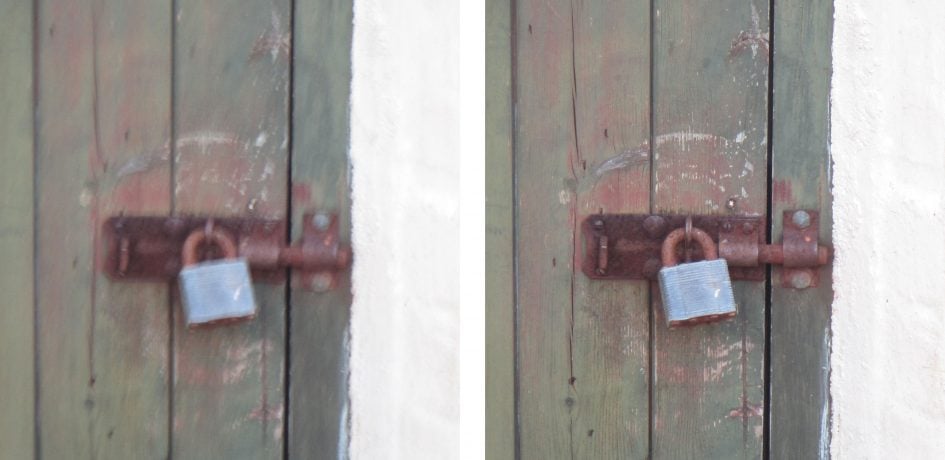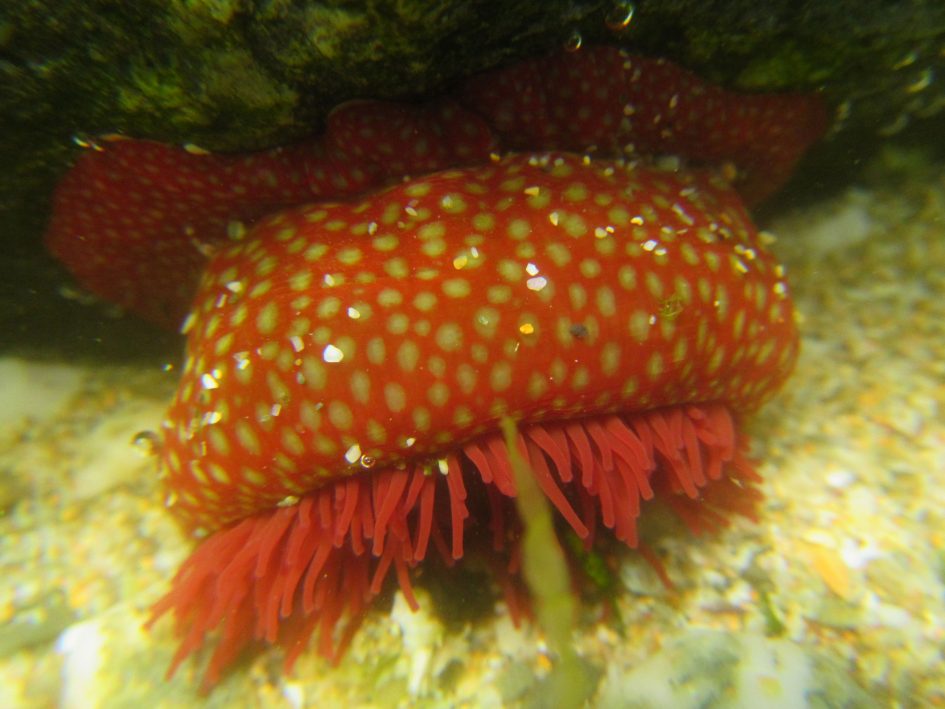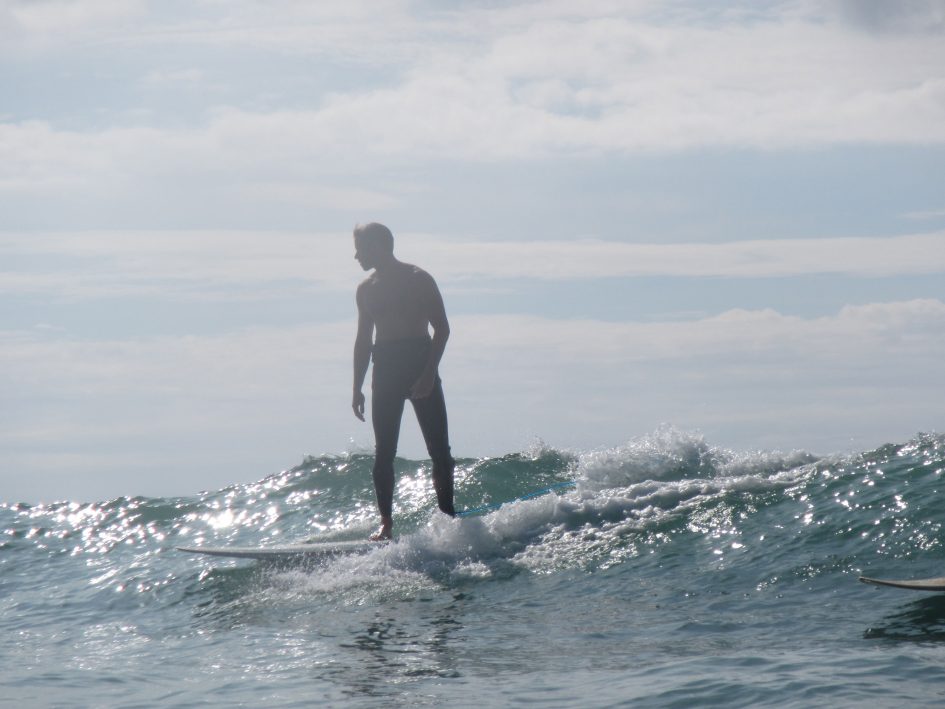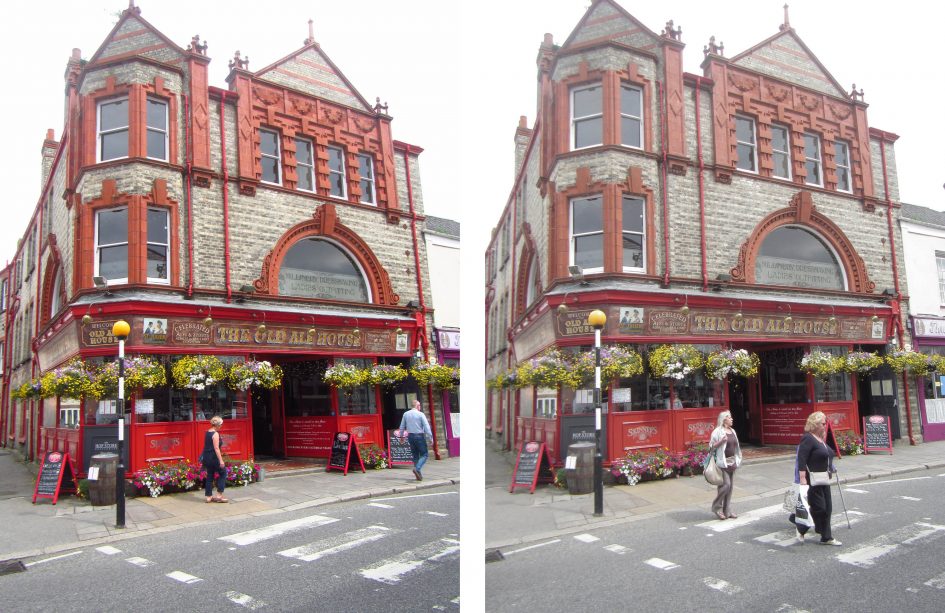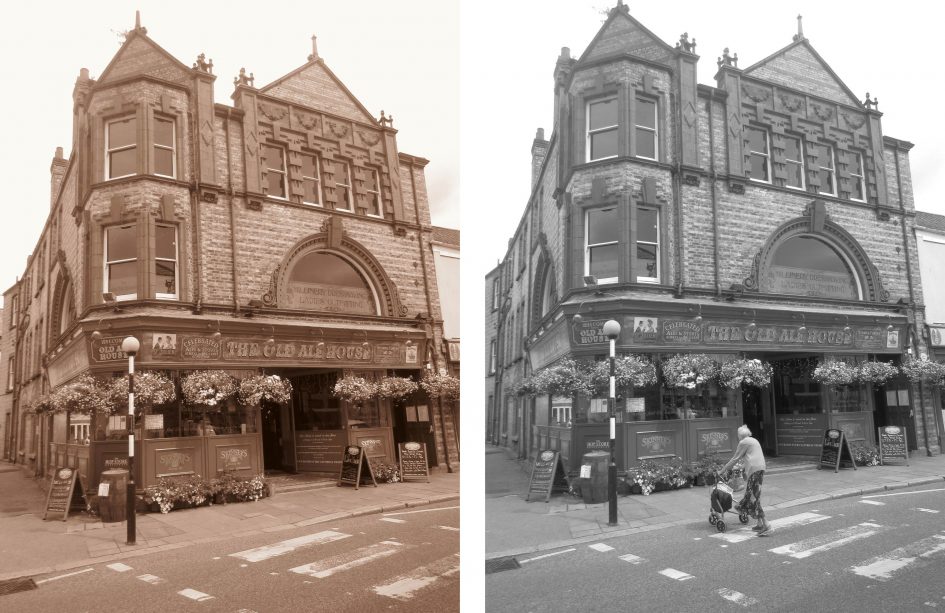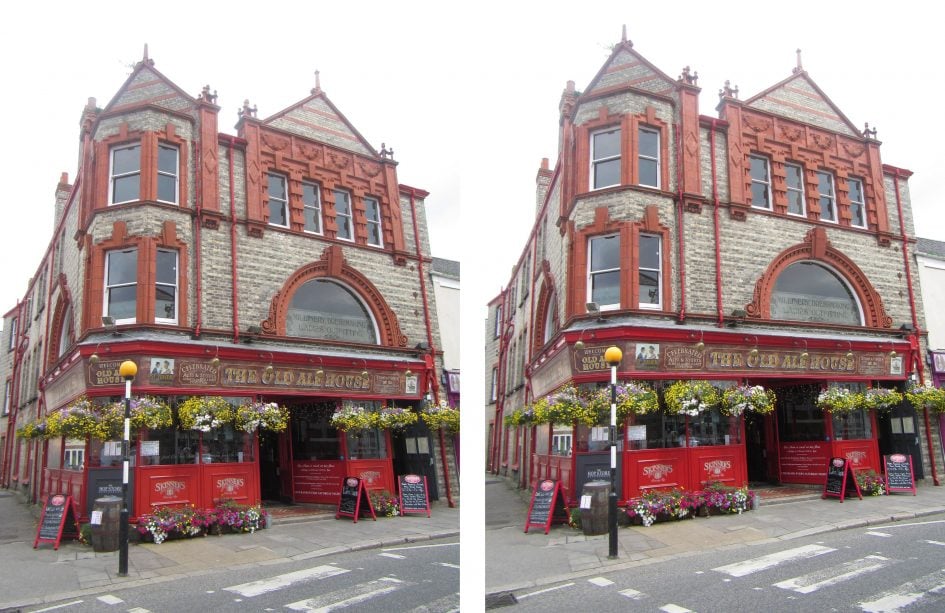Canon PowerShot D30 review
-
-
Written by Ken McMahon
In Depth
The Canon PowerShot D30 is a rugged compact that’s water-proof, shock-proof, freeze-proof and dust-proof. Launched in April 2014, the D30 is the third water-proof compact from Canon replacing the PowerShot D20 from 2012.
The newer model is water-proof to a depth of 25 metres, that’s deeper than you can go with most water-proof compacts. The D30 retains the 12 megapixel sensor and 5x / 28-140mm equivalent optical zoom of its predecessor as well as its 3in / 460k dot LCD screen. So aside from a redesign and better sealing, there’s not a great deal that’s new.
Water-proof PowerShots have been popular with beach-bound consumers ever since the introduction of the PowerShot D10 in 2009. Some of that popularity is likely due to brand loyalty – those who already own a PowerShot opting for something familiar. Canon produces only one water-proof PowerShot and the D30 is only the third update to it in five years. Other manufacturers like Nikon and Olympus offer several models and update annually, so is Canon doing enough to keep up in the water? To find out I tested the PowerShot D30 alongside the similarly priced Nikon COOLPIX AW130 and Nikon’s budget water-proof compact, the COOLPIX S33.
Canon PowerShot D30 design and controls
The PowerShot D series started out with a radical design that wouldn’t have looked out of place on Captain Nemo’s Nautilus. I loved it, but the two updates since then have both taken a more conservative tack. I still like the D30’s design though, with its rounded edges and grip pads it’s more stylish than many rugged compacts. My review model above was finished in an attractive metallic blue, apparently the only colour available. Though the D30’s contours don’t lend themselves to a secure grip, there are nobbly pads of soft rubber-like material on the front and rear which help a lot.
The lens is mounted in the top left corner with the built-in flash and AF assist light just to the side of it. The huge shutter release is on the top panel flanked by a smaller movie record button on the right and the lozenge-shaped on/off button to the left.
Round the back there’s a rocker switch to activate the zoom. You won’t find a zoom collar around the shutter release as is common on conventional compacts on a water-proof model because they’re difficult to seal, but of all the alternatives Canon’s thumb operated rocker is the one I prefer. It’s certainly easier than using the four-way controller on the COOLPIX S33 and the zoom is a lot smoother too.
Further down there’s the familiar Canon compact control layout comprising a four-way control pad with a button at the centre to activate the quick (function) menu. Finally at the bottom are playback and menu buttons. The Screen measures 3 inches diagonally and has a resolution of 461k dots.
I’m pretty sure this is the same PureColor II LCD screen as on the D20, it provides a bright contrasty image that’s easy to see other than in bright sunlight, which any screen will find a challenge. Canon has responded by providing a Sunlight mode which boosts the screen brightness so it’s easier to see outdoors in bright conditions. I have to say it worked pretty well and was a definite improvement on the ‘normal’ screen mode. But if you keep it on constantly it will drain the battery a lot quicker.
A full length sealed door on the right side provides access to the mini HDMI port for connecting the camera to a TV and the USB /AV port for connecting to a computer to download photos and video or connecting to an older standard definition TV. Unusually, the PowerShot D30 doors have only one latch, not two as is common on water-proof compacts. The single latch didn’t let me down in the water though and both the ports and the combined card and battery compartment in the base of the camera remained dry.
The D30’s battery is good for 300 shots when fully charged, that’s 80 more than you’ll get from the budget S33 but not as good as the generous 370 shot capacity of the COOLPIX AW130. To charge the PowerShot D30’s battery you need to remove it from the camera and use the supplied mains charger. So if you’ve got a spare you can use it while the other one is charging. The Nikon COOLPIX and Olympus TOUGH models charge their batteries in the camera via their USB ports. a much better arrangement in my opinion as you can charge the battery by connecting the camera to a computer, car adaptor, portable battery or whatever other power source might be available.
Canon PowerShot D30 lens and stabilisation
The PowerShot D30 has a 5x zoom with an equivalent range of 28-140mm and a maximum aperture of f3.9 at the wide angle setting closing to f4.8 when fully zoomed in. This is the same lens as the earlier D20 and it compares well with the competition in terms of range and quality. You tend not to get longer zooms on water-proof compacts because of the space and sealing constraints. The budget S33’s range is 3x ranging from 30 to 90m equivalent with an f3.3-5.9 aperture.
The COOLPIX AW130 also has a 5x zoom range starting at a wider 24mm and finishing up at a maximum 120mm. The AW130’s f2.8-4.9 maximum aperture is almost a stop brighter than the D30’s at the wide angle setting though. That means that (at the wide angle setting at least) you can shoot in the same conditions with the same shutter speed, but a lower ISO setting on the AW130, for example at 400 ISO on the AW130 compared with 800 ISO on the D30. But the king of low light underwater shooters is the Olympus Tough TG-4 with a 4x 25-100mm f2-4.9 lens. With the Tough TG-4 you’d be shooting at 200 ISO in the example above.
Canon PowerShot D30 coverage, wide and tele
Above left: Canon PowerShot D30 at 5mm (28mm equivalent). Above right: Canon PowerShot D30 at 25mm (140mm equivalent)
The D30 is equipped with optical image stabilisation which shifts the lens elements to compensate for camera movement. For stills shooting it has three settings – off, continuous and shoot only. To test it I took a sequence of shots at progressively slower shutter speeds with the lens zoomed to its maximum 140mm focal length. As you can see from the crops below, the D30 can take sharp hand-held shots at speeds down to 1/15, that’s around three stops of stabilisation over what I needed to handhold the same result without stabilisation.
Canon PowerShot D30 Image Stabiliser on / off
Above left: 100% crop, 5-25mm at 25mm, 1/15, 100 ISO, IS off. Above right: 100% crop, 5-25mm at 25mm, 1/15, 100 ISO, IS Continuous.
Canon PowerShot D30 movie modes
The PowerShot D30 retains the same core video modes as the earlier D20 including 1080 / 24p, 730 / 30p and 480 / 30p. It also has two super slow motion movie modes that operate at low resolution. You can record at 640×480 at 120fps for quarter-speed playback or at 320×340 at 240fps for 1/8 speed playback.
There’s also the feature mode now included on most Canon compacts that shoots a short clip prior to each still photo you take and then assembles them into a 640×480 movie. Originally called Movie Digest mode, Canon has renamed it Hybrid auto on recent models but, for reasons best known to itself, has reverted to calling it Movie Digest mode on the D30.
Where most compacts, including water-proof ones are equipped with stereo microphones the D30 sticks with a mono mic. You can’t take photos during movie recording – if you press the shutter release all you succeed in doing is stopping the recording.
It’s more than a little disappointing that Canon hasn’t updated the D30’s video capabilities, though to be fair they’re more or less on a par with the COOLPIX AW130 which has a 1080 / 25/30p best quality mode, similar slow motion modes, though can also film at slow frame rates for 2x playback and has a time-lapse movie feature. The AW130 also has stereo mics. But if you plan to shoot video as often as stills the TOUGH TG-860 has more to get excited about. As well as a raft of 60p modes you can shoot slow motion movies at the same speed but higher resolutions than the D30 and in 16:9 as well as 4:3 formats (though still no HD slow motion modes) plus, like the COOLPIX AW130, it can shoot at intervals and assemble the shots into a time-lapse movie.
Download the original file (Registered members of Vimeo only)
This clip, like the others below was shot in the Canon D30’s best quality 1080/24p video mode. There’s not much to be critical of here, the stabilisation does a good job, the Autofocus keeps everything sharp and there’s no noise from the motor as you zoom in and out.
Download the original file (Registered members of Vimeo only)
For this second clip the camera was mounted on a tripod and stabilisation was disabled. Once again the D30 produces great result. There’s no flare and the exposure is well handled even though the camera is facing into the light at the beginning of the pan.
Download the original file (Registered members of Vimeo only)
The D30 produces as good results indoors as out. There’s a little bit of noise in this indoor low-light panning shot, but no more than you’d expect. Like many Canon compacts, the D30 is quite sensitive to changes in light levels and over-compensates a little when panning past the bright windows, but it quickly adjusts to get the exposure right for the final bar section of the pan. Once again the AF is very solid.
Download the original file (Registered members of Vimeo only)
For this clip I tested the Canon D30’s continuous AF performance by zooming the lens in slightly and panning from the coffee cup on the table up to the bar and back again. And it’s another very strong performance from the D30 which almost seems to anticipate the change in subject distance and alter the focus accordingly.
Canon PowerShot D30 shooting experience
In the water the D30 is great fun to use, primarily due to the simple navigation provided by the function menu. Although it lacks a mode dial one press on the top position of the four way pad gets you to the shooting mode menu with the D30’s six main options – (Smart) Auto, Program Auto, Underwater, Snow, Scene modes and Super Slow Motion Movie; where there are sub-modes they appear on a fly-out.
One issue the D30 suffers from is that its shutter release is very spongy. It travels a long way before reaching the point where the AF is activated, and from there only very slight extra pressure is needed to fire the shutter. I found I quite often fired the shutter accidentally before the AF had done its work, the result being lots of out of focus snaps. To be fair the D30 isn’t alone in this. The COOLPIX AW130’s shutter needs to be pressed a very long way down before anything happens, but it’s more positive from there on. The Budget S33’s shutter was the most positive, and the Olympus TOUGH models were also good.
The D30 has a feature called Active Display where you can scroll through photos during playback by lightly tapping the sides of the camera, but it doesn’t extend to menu navigation like tap control on the Olympus TOUGH models which is a shame.
The D30 has Face detect AF which works as well as on other PowerShots in ‘normal’ circumstances, but isn’t so effective in the water and when subjects are moving fast, but to be fair, that’s a criticism that could be made of any compact in the water. When it can’t detect faces the D30 defaults to Canon’s very effective nine area AF.
Alternatively you can select Centre AF and choose from one of two sizes for the central AF area, like the TOUGH TG-860, though, there’s no option to reposition the AF area. The D30 does, however, offer manual focus, something you won’t find on any of the other rugged water-proof compacts I tested. To be clear though, you’re unlikely to be using manual focus when under the waves or half way up a mountain. Adjusting the focus using the four-way controller while looking at a magnified portion of the screen is manageable, but probably only if you’ve got the D30 on a tripod on dry and level land.
Above: 1/60, f3.9, 1000 ISO, 5mm (25mm equivalent) Underwater Macro mode
The D30 has two underwater modes one of which is a macro mode that allows you to get within a centimetre of your subject. I experienced problems with focus on some of the other models’ underwater macro modes, but the D30 is very good and nearly always manages to lock onto close subjects first time if you set the central AF area.
In common with most PowerShot compacts, the D30’s continuous shooting is so slow its usefulness is limited. The quoted speed is 1.9fps and that’s exactly what it delivered when I timed it. You could use it to, say, take several frames when shooting family portraits or group shots, but for fast moving action it’s all but useless.
I spent quite some time in the water with the D30 trying to capture action shots of surfers using the D30 in continuous shooting mode. Firing off a handful of shots in quick succession can improve your chances of getting one just at the right moment that’s well framed, but the D30’s continuous shooting is just too slow. Often, the action is over by the time the D30 takes the second or third shot and, even if it isn’t, frequently the subject has moved and is no longer in focus – the D30 sets the exposure and focus on the first frame.
The Nikon COOLPIX S33 can manage a fairly respectable almost 5fps, though after the first few frames the screen lag is so bad you can’t see what you’re shooting. The COOLPIX AW130 can shoot at 7fps, but only for a for a 5-frame burst so that’s less than a second of action. For continuous shooting that will allow you to capture a decent action sequence you’ll need to look to the Olympus TOUGH TG4 or TG860.
Above: 1/500, f10, 100 ISO, 25mm (140mm equivalent) Program Auto
The PowerShot D30 doesn’t have built-in Wifi, an omission that is hard to justify given its price. The Nikon COOLPIX AW130, Olympus TOUGH TG-860 and TOUGH TG4 offer built-in Wifi, and while it’s absent from the COOLPIX S33, that model is close to one third of the price of the D30.
If you’ve no desire to share the photos and videos you take, or are not interested in say, plunging your water-proof camera into a river with one hand and taking a look at what’s down there on your phone in the other, then it won’t be an issue, but it’s hard to think of a reason to choose the D30 in preference to similarly priced water-proof models offering built-in Wifi.
While it lacks Wifi, the PowerShot D30 is equipped with a GPS receiver enabling automatic location tagging of images. The D30 also records a track log which you can use with you own software or websites, to map your route. Unlike the COOLPIX AW130 the D30 doesn’t display lat and long data on the screen and doens’t have a mapping display. Personally, I didn’t miss it, and I don’t think it’s all that useful, but features like a compass and altitude/depth display are worth having and this is another area where the D30 lags behind the competition.
The other thing the D30 lacks is a panorama mode, which isn’t all that surprising as panoramas are something Canon has never embraced. Canon persists with the stitch assist mode, which provides overlays to help you shoot overlapping shots in order to create a panorama using software, but this is a bit of a throwback to the days before in-camera panoramas were commonplace and I doubt many people will bother with it.
The good news is that if you want an underwater camera with a panorama mode there’s plenty of choice. Though the budget COOLPIX S33 won’t do panoramas, the Olympus TOUGH TG-4 and TG-860 have excellent panorama modes as does the COOLPIX AW130.
The scene mode position on the function menu includes a dedicated position for snow shots, and another for shooting underwater, which is sensible. All the other scene modes and effects are on a single flyout with 17 options, so it can take a good deal of button pressing get to the one you want. The list includes Portrait, Handheld NightScene, low light, Fireworks, and long shutter scene modes as well as fish-eye, Miniature, Toy Camera, Monochrome, Super Vivid, Poster, Colour Accent and Colour Swap effects. You’ll also find the Smile Shutter feature here which uses Face detection to automatically take photos when someone smiles and provides a face or wink-activated self-timer.
The D30 provides a bit more scope for effects on the My Colours menu. Here you’ll find some of the more subtle effects shown below that mainly effect colour rendering including Vivid, Neutral, Sepia, B/W Positive film, Vivid Red, Vivid Green and Vivid Blue.
Above left: Canon D30 : Vivid. Above right: Canon D30 : Neutral
Above left: Canon D30 : Sepia. Above right: Canon : B/W
Above left: Canon D30 : Positive Film. Above right: Canon D30: Vivid Red
